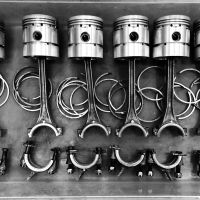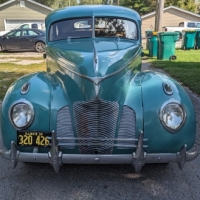1937 Hudson 8 brought back to life, but not quite healthy
I have a 37' Hudson 8 that had sat for what we guess is close to 26 years, could be more. It was bought from the Norm Wheeler estate, so I was not able to ascertain the condition of the car prior to purchasing from the previous owner. It's been a long 6 months but the engine runs well, for the most part. Here is a list of what's been done to date:
Carb rebuild
-Pulled head and cleaned, installed new head gasket
-Replaced all the exhaust studs, some were broken
-Pulled the water jacket cover, cleaned the block as best I could and installed water jacket cover
-New radiator hoses
-New plugs
-Drained gas tank and let air out for a few hours
-Brakes were gone through, wheel cylinders replaced as needed and did the long metal line on the axle, the short one was done already.
Here is what I know is in need of repair/ replacement
-Radiator is leaking and I believe is well blocked, it runs hot at idle, but not while driving
-After about a mile or 2 it shows symptoms of fuel starvation. If I let the car idle for a few mins it clears up, for a short while Cleaned the sediment bowl, found kinked rubber fuel line, which improved the issue, but did not eliminate it. I went for a test drive after that work was done and I still had to let it idle for about 5 mins, then I was ok to drive it back to the garage. Pump appears to have been rebuilt, when I have no clue.
-Cap/rotor/points/condenser, though they don't look horrible they are going to get done out of routine maintenance.
front of the engine needs all new gaskets and seals, which I will do when I pulled the radiator. Gaskets and seal are all on hand already.
-Speedometer not working. I'm sure the cable is broken or something like that
-Lots of oil on the trans. My assumption is the engine is the source of that. So it needs to be cleaned.
-Rear diff needs to be serviced and checked.
-King pins and bushings. Parts are on hand already.
I am trying to get the engine in a condition it is reliable. I also have some blue smoke once it warms up, but I believe I know where that is coming from. Either stuck rings or time for a re-ring( good winter project).
The real issue I haven't been able to nail down is the fuel starvation issue. My test drive yesterday I was heavy on the gas pedal to my turn around point, which resulted in the stumbling issue, no stalling though. On the way back after the idle time, I was much lighter on the gas pedal and had no issues. So it's pretty clear that it's starving for fuel under heavy load. I am currently looking for a radiator shop to asses my radiator. I may drop the fuel tank and asses the condition of that. I also don't believe there is an inline filter, unless I just didn't see it, as I wasn't looking for it before. Who knows, maybe there is!
Has anyone dealt with the fuel starvation issue before?
Carb rebuild
-Pulled head and cleaned, installed new head gasket
-Replaced all the exhaust studs, some were broken
-Pulled the water jacket cover, cleaned the block as best I could and installed water jacket cover
-New radiator hoses
-New plugs
-Drained gas tank and let air out for a few hours
-Brakes were gone through, wheel cylinders replaced as needed and did the long metal line on the axle, the short one was done already.
Here is what I know is in need of repair/ replacement
-Radiator is leaking and I believe is well blocked, it runs hot at idle, but not while driving
-After about a mile or 2 it shows symptoms of fuel starvation. If I let the car idle for a few mins it clears up, for a short while Cleaned the sediment bowl, found kinked rubber fuel line, which improved the issue, but did not eliminate it. I went for a test drive after that work was done and I still had to let it idle for about 5 mins, then I was ok to drive it back to the garage. Pump appears to have been rebuilt, when I have no clue.
-Cap/rotor/points/condenser, though they don't look horrible they are going to get done out of routine maintenance.
front of the engine needs all new gaskets and seals, which I will do when I pulled the radiator. Gaskets and seal are all on hand already.
-Speedometer not working. I'm sure the cable is broken or something like that
-Lots of oil on the trans. My assumption is the engine is the source of that. So it needs to be cleaned.
-Rear diff needs to be serviced and checked.
-King pins and bushings. Parts are on hand already.
I am trying to get the engine in a condition it is reliable. I also have some blue smoke once it warms up, but I believe I know where that is coming from. Either stuck rings or time for a re-ring( good winter project).
The real issue I haven't been able to nail down is the fuel starvation issue. My test drive yesterday I was heavy on the gas pedal to my turn around point, which resulted in the stumbling issue, no stalling though. On the way back after the idle time, I was much lighter on the gas pedal and had no issues. So it's pretty clear that it's starving for fuel under heavy load. I am currently looking for a radiator shop to asses my radiator. I may drop the fuel tank and asses the condition of that. I also don't believe there is an inline filter, unless I just didn't see it, as I wasn't looking for it before. Who knows, maybe there is!
Has anyone dealt with the fuel starvation issue before?
0
Comments
-
Where your fuel line go's in to your tank may have a screen my 1940 has one on the inside of the tank on the back of the fuel inlet go's it could be the problem ?0
-
Here are a few suggestions:
1. Replace the condenser with a new or N.O.S. one. It's quick and easy, and condensers are often at fault.
2. You might have vapor lock. Is your trouble developing when the engine is hot?
3. One cause of vapor lock is heat working up through the manifold into the carb. Do you have enough fiber spacers under the carb? In my '37, I have 4 spacers, then the metal air deflector, then 4 more spacers. So many spacers, in fact, that I had to get longer threaded studs in order to bolt the carb to the manifold. But I've never had vapor lock since I did that.
4. You might have a bad coil caused by heat. Again: does the problem happen when the engine is hot. Take along some ice to quickly cool the coil, when the stumbling occurs. If the car runs better, then, go for a new coil.
5. Look for an inline fuel filter and replace. It may be full of trash. Also check the filter screen at the top of the glass sediment bowl.
6. Carefully inspect the length of your fuel line, between fuel pump and tank, for any leaks that might cause the pump to suck air. There might be a leak in the pickup tube in the tank, so that it sucks air.
7. The fuel pump's a big "if". Also, if it's an old rebuild, it may contain seals that are affected by ethanol. If there were a way to quickly the fuel line from the pump, at the point where it enters the carb, then you could disconnect it when the car starts to stumble, and observe if the pump is (at that moment) delivering a steady supply of gas. If it isn't then it's either a bad pump, or you're sucking air (maybe in the tank), or there is crud somewhere in the line. If it's delivering a steady supply, then maybe fuel starvation isn't your problem.
8. One quick way to check the condition of the fuel lines and tank (for obstructions or gunk) would be to detach the metal line (from the tank) at the back of the fuel pump, then run a new temporary rubber hose from the pump to a 1 gallon gas can that sits on the floor of the car. (with luck there is some convenient rust-out through which you can run the rubber hose into the cabin.) Then do your test drive. If it still stumbles, you will at least know that the trouble is NOT due to gunk or an air leak in the metal line or pickup tube in the tank. Of course, as I said, the trouble could be electrical, not fuel.0 -
Jon I like your idea of a small remote "tank" to prove out the tank and chassis line. The stumbling happens less then 15 mins after starting from cold. As I mentioned before, the car definitely did not cool down when I was letting it idle, as the coolant temp was getting hotter. There is no backfiring that would indicate an ignition issue creating unburnt fuel in the exhaust. My current plan is to pull the radiator before doing anything else before I cause damage to the engine. Once I have the radiator resolved, and get the water pump rebuilt (ideal time to do it), I will tackle the troubleshooting of the stumbling issue. I may try an electric fuel pump to see if the pump is part of the problem.
When I pulled the sediment bowl I didn't see a screen.0 -
Unfortunately it could be 1) electrical issue, 2) gas issue or a 3) mechanical related issue.
On one of my 37’s I experienced cutting out when driving which was due to a missing cam thrust washer. After replaced no more cutting out so that was mechanical.A 54 Hornet gave me cutting out a month ago & it was due to a bad spark plug wire. I fixed that electrical issue & no more problem.Before that I had a gas problem with a tank who’s condition was unknown and twice I had experienced it cutting out & dying. I replaced the steel “inline filter” with a clear plastic “see through” inline filter. Shortly there after I got some sediment in the filter but not much, yet it still died. Thinking I was out of gas I threw in a little bit & it started immediately, as if it had never run out of fuel. Ultimately I pulled the tank & power washed it out & chemically cleaned it. With all the crap that came out of the tank I knew the pick up tube as getting clogged & the clog was washed clear with a bit of gas I added along side of the road.It can feel like your chasing your tail & I have found that while it’s a lot of work it’s best to start at the tank, clean &/or replace all the way to the carburetor, for the fuel system. Likewise with electrical, one can pick & choose, here & there to replace things or just get it all new & correct. On the 37 I mentioned 1st, I also had the wrong rotor in place that was too short & thus spark was jumping which pitted the inside center of the cap’s carbon button.Finally don’t just assume something either. By this I’ll give you an example: on the 54’s gas tank the side that I could easily see & get to was the side with the sending unit. It looked pretty clean, not resembling that which would clog a pickup tube. The other side I could only see through the pickup tube hole. I used my lighted bore scope to see in there & found loads of crap. I made an adapter to attach to my garden hose & stick in the pickup tube hole to blast it clean with water. Yep a bunch of work but satisfying knowing it was done right & would never be an issue ever again.
You have gotten some good suggestions from others as well, hopefully you can find the problem.Before tank cleaned: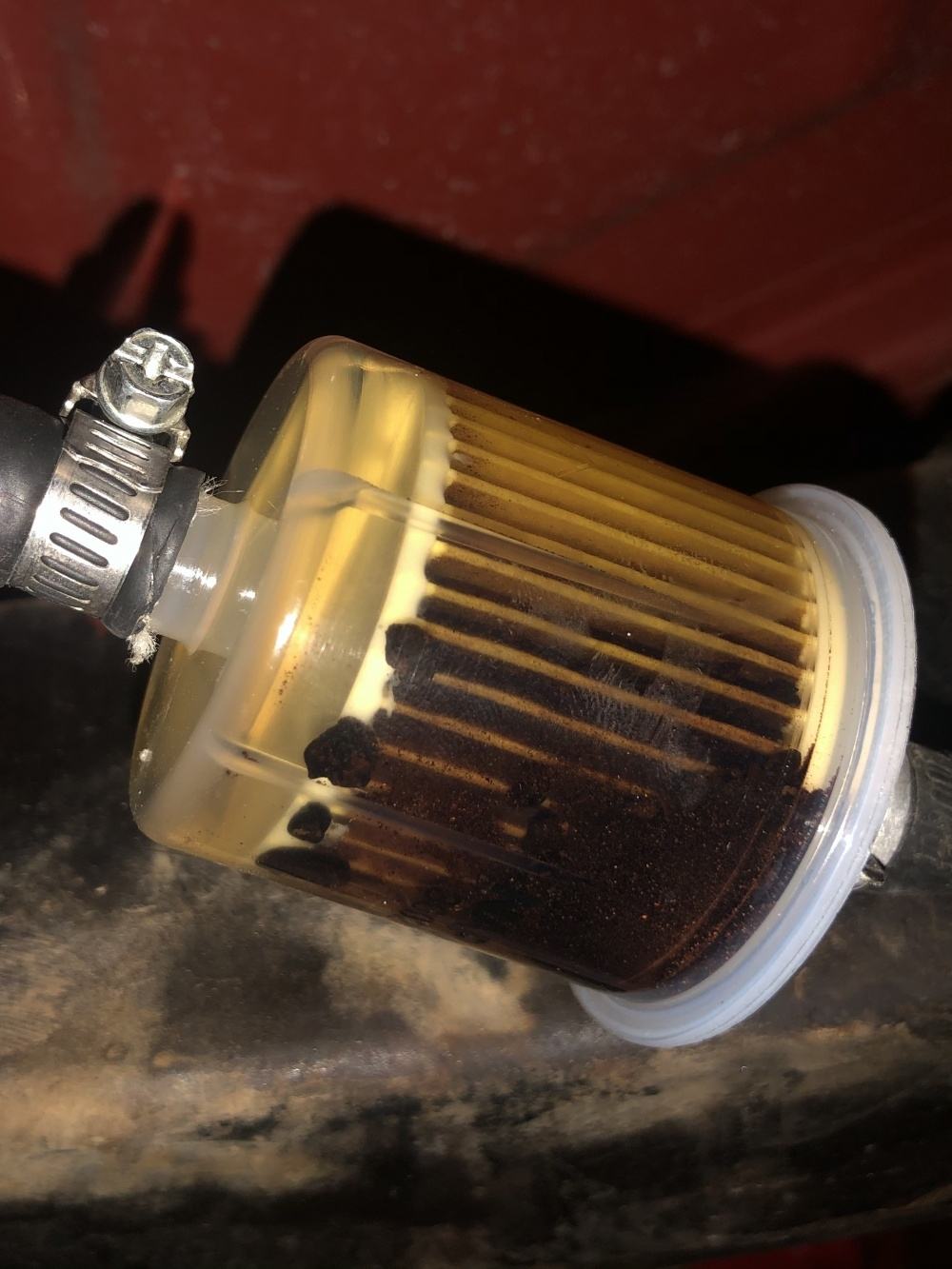
The easy access side… looked good: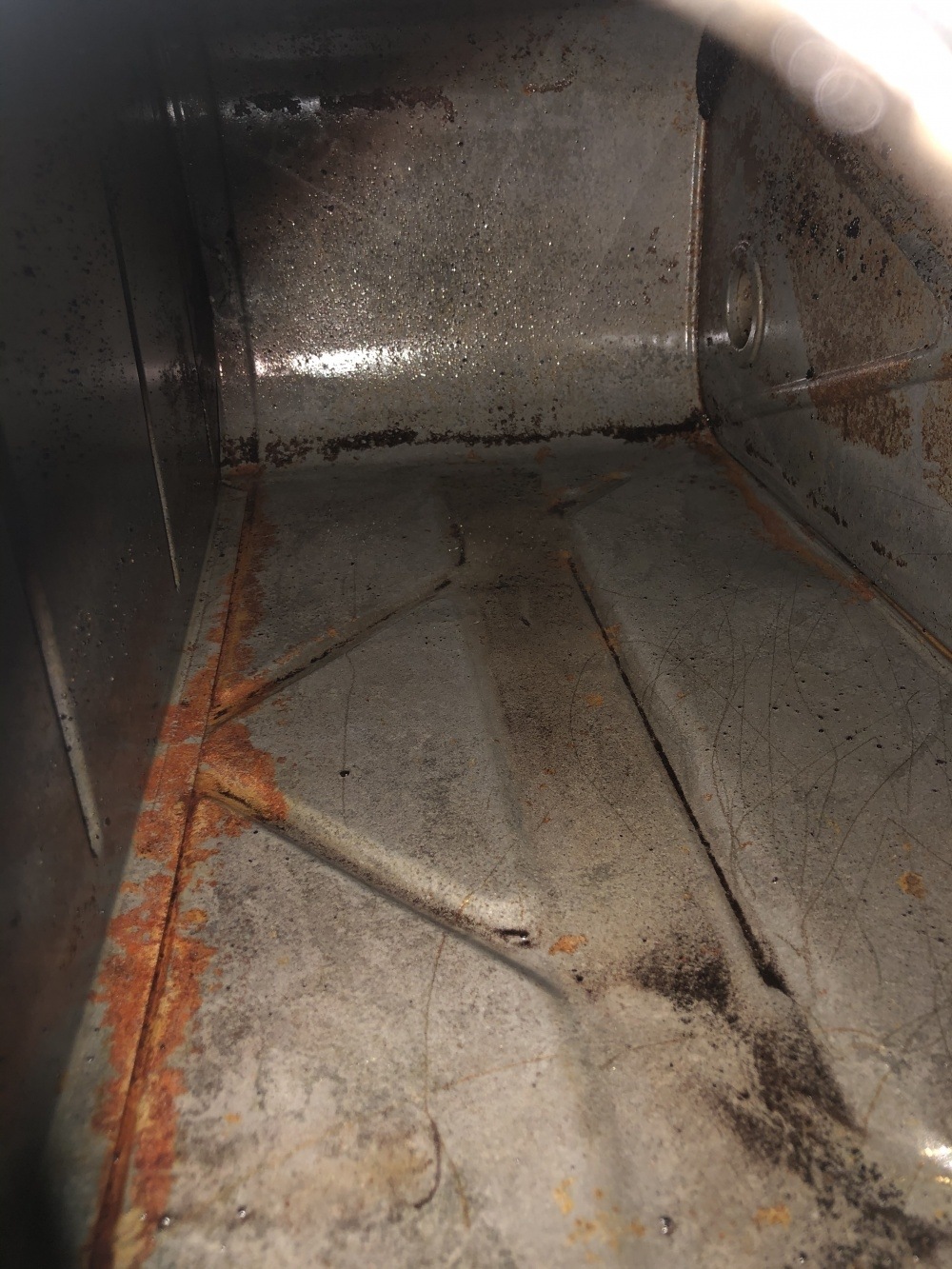 The not easily accessible side of the tank:
The not easily accessible side of the tank: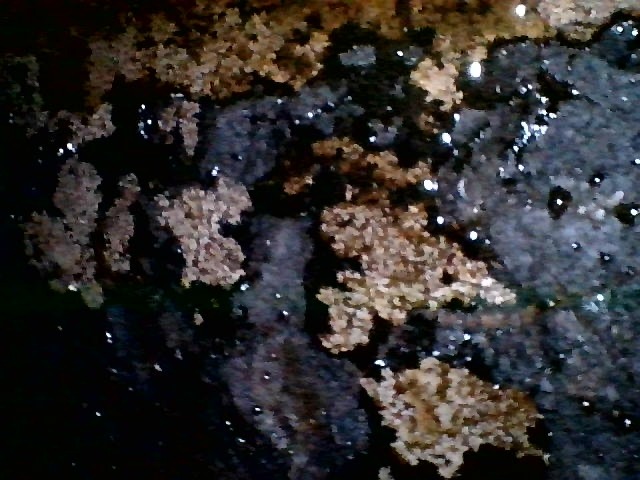 Just a sampling of what was found in the gas tank:
Just a sampling of what was found in the gas tank: The not easy access side after cleaning: (image with bore scope so not the best)
The not easy access side after cleaning: (image with bore scope so not the best)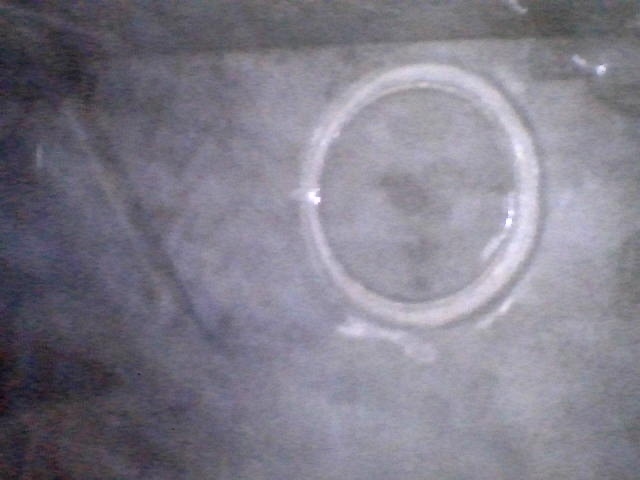 The before cleaning shot of the same spot:
The before cleaning shot of the same spot: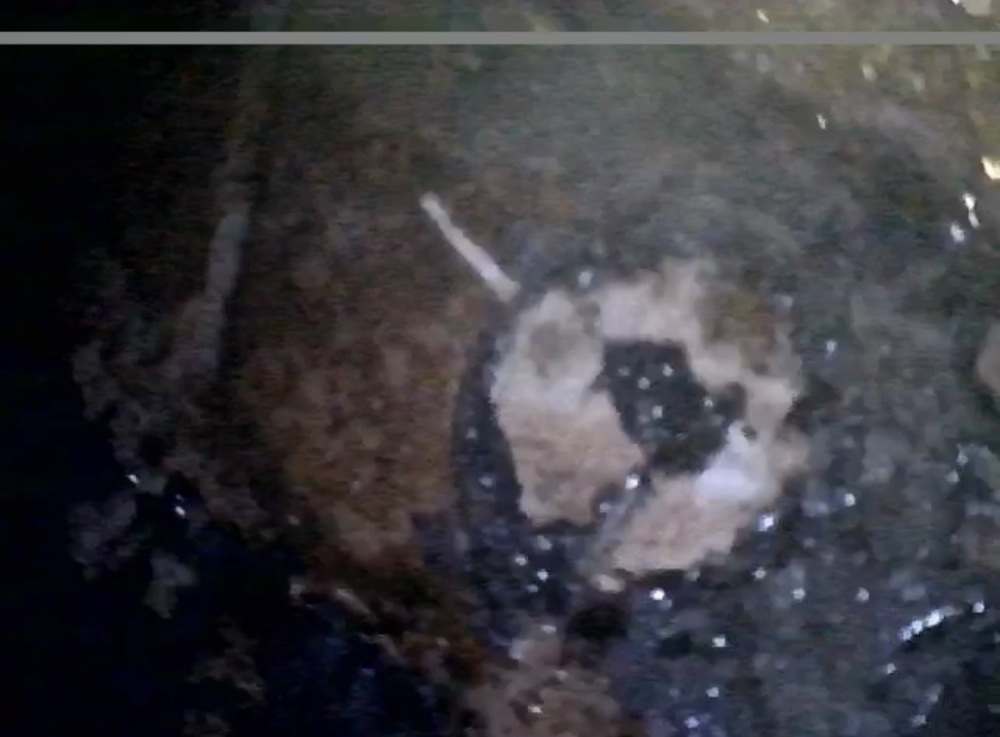 0
0 -
All great advice listed above, so here my 2 cents as I had an issue as you describe with my 39. Pull the line from the carb and see how much gas you are actually pumping. Should be a good quantity. It may just be your fuel pump. I know you said it had been rebuilt but I got a rebuilt and it leaked right away. I was pumping low volume. New pump and problem solved.,0
-
Here is a quick update. Worked on the car on Tuesday. Found the fuel pump is leaking. Also seeing sediment in the glass bowl, which I had just cleaned a week before. So, clearly the diaphram is shot, so I am pulling the pump tomorrow so I can get it rebuilt next week. I am also going to install an in line fuel filter back near the tank. I know I need to drop the tank and inspect it, which I will do at some point soon. My goal is to see if getting the pump fixed solves my issue. The filter will keep the crap out of the pump going forward as well. Once I get the fuel delivery system up to snuff I will drop the tank and give it a once over.
On another note It looks like I have solved the running hot issue. The coolant level was down a whole gallon!!! I filled it during initial start up after reassembly and I never bothered to recheck it, why, I have no clue. LOL. I also checked the timing, and was off so I adjusted that too. Had to rotate the distributor clockwise, which I believe retards the timing. If that is the case then it was advanced too much which could also make the engine run hot. So, making progress. I added motor honey to see if that clears up the blue smoke, of course I should have added 2 bottles but only added 1. I know this may not solve the issue and I am prepared to a ring job if needed, something I am comfortable with doing. We have long winters in New England so I got time. LOL0 -
You could also make a pickup tube gasket from 1/8 or thicker material to try to get it off the bottom the tank a bit. It may help keep from picking up all the crud in the tank, at least before you get to dropping & cleaning it.0
-
BigSky, curious about the power washing and chemical cleaning. Did you use an actual power washer or as you described flushed it with your hose adapter. What chemical did you clean with? Thinking of dropping my tank as my in-line filter has clogged a few times so looking for any advice.0
-
I used Simple Green to clean a non Hudson gas filter last year. Worked extremely well. Before and after pix
Jim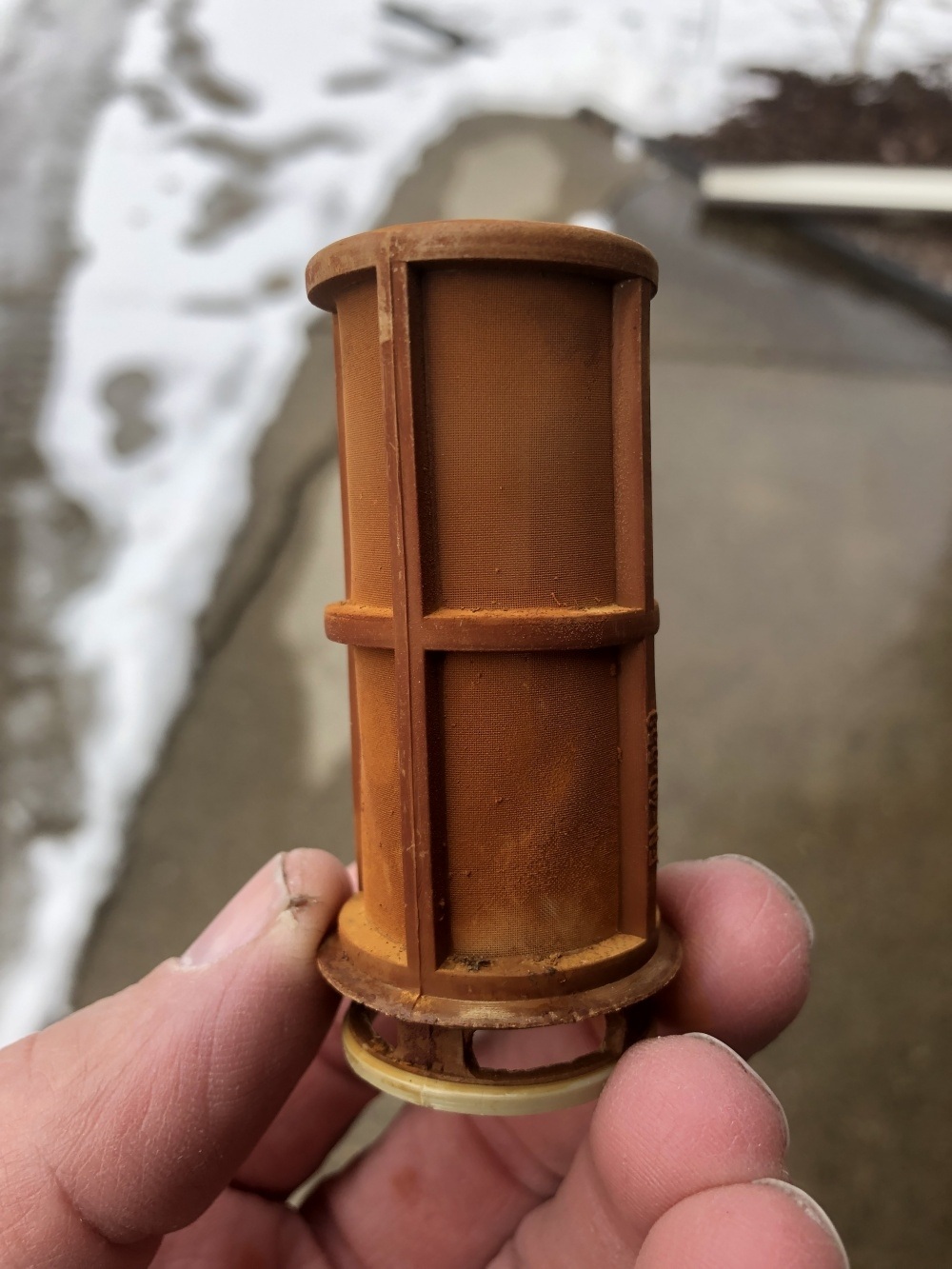
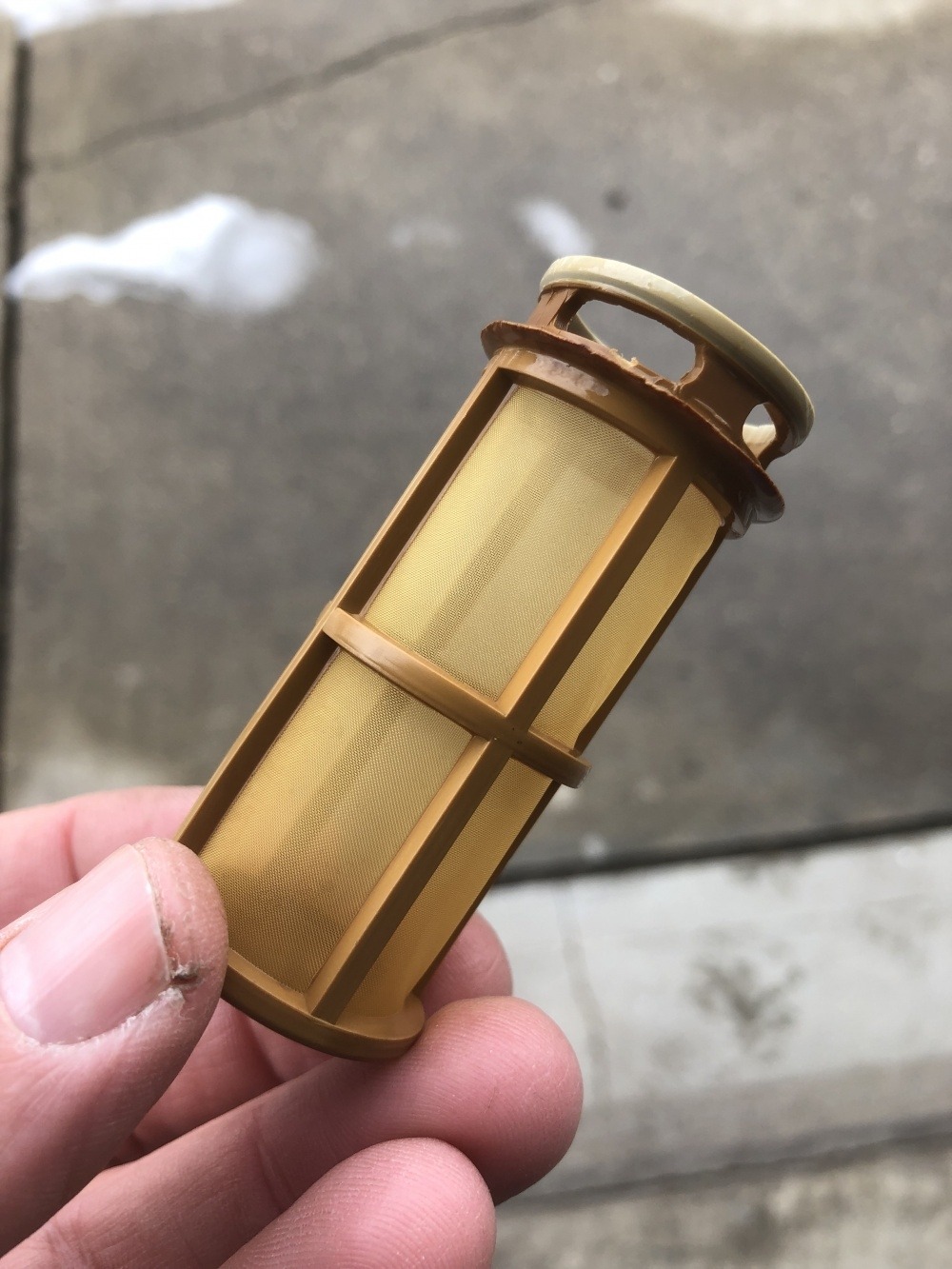 0
0 -
GAS TANK RESTORATION -
cleaning completed used two saw horses to hold tank during work.- Flushed out the tank with water. Built the copper wand to hook on to the garden hose & slide inside the pickup tube hole, then blasted it clean. Note: pinched end down to get more blast of water.
- Only rust left at this point. I used phosphoric acid (non-diluted) & duct taped all openings. Sloshed it all around, laying it on different sides for 30 minutes total.
- Removed duct tape & quickly rinsed out the tank.
- I made a neutralizing mixture for the acid before the previous 30 minutes cleaning with 1/4 cup baking soda dissolved in hot water. 2 quarts total was added to the now empty tank & sloshed around again to neutralize the acid. Drained & another quick water rinse.
- Added a bottle of rubbing alcohol & sloshed it around to absorb some remaining water then drained it out.
- Sprayed half a bottle of WD40 in the tank & sloshed it around. Then I was done with the inside cleaning.
- Tank sanded prepped & painted Gloss black - automotive paint
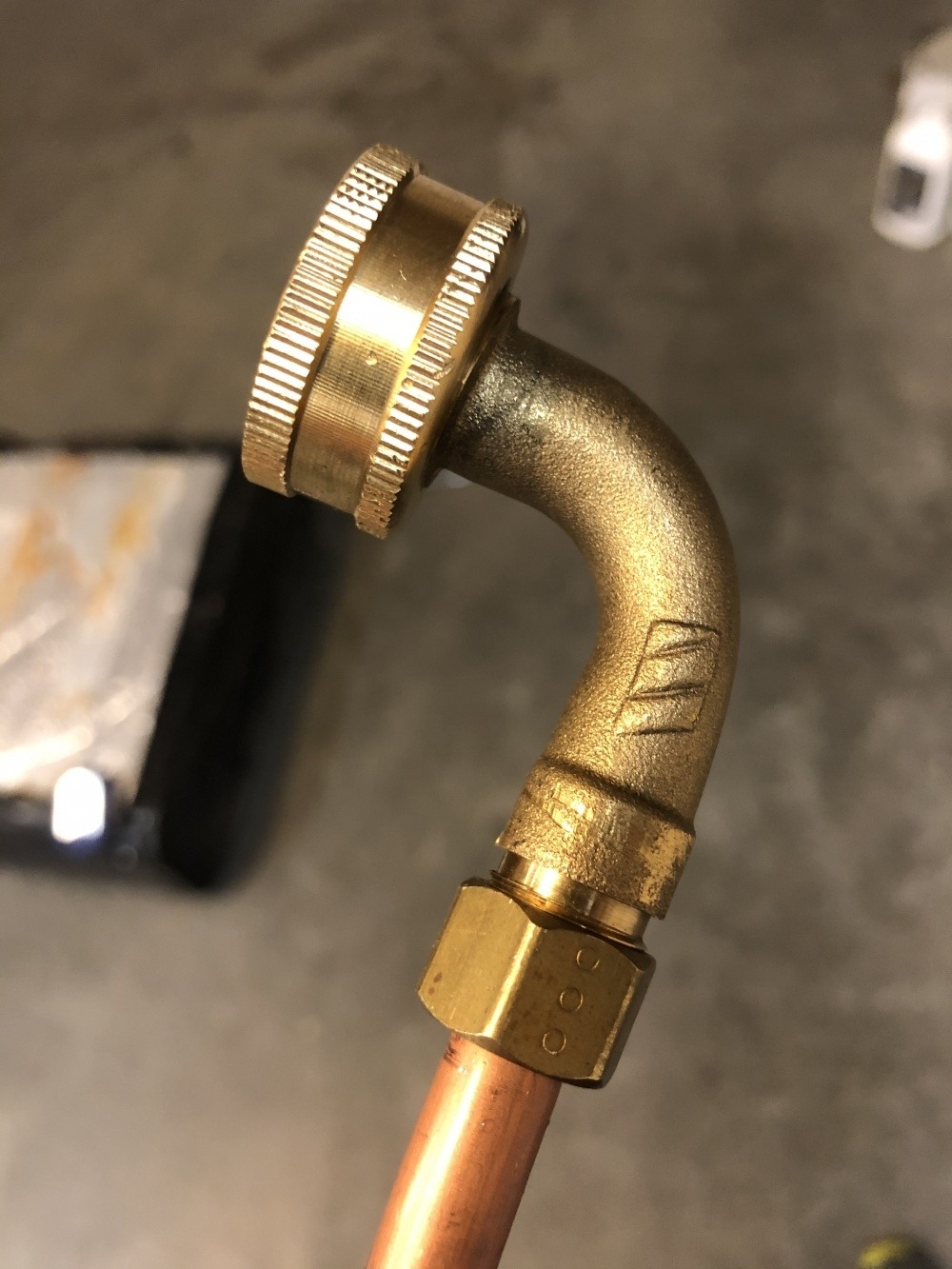
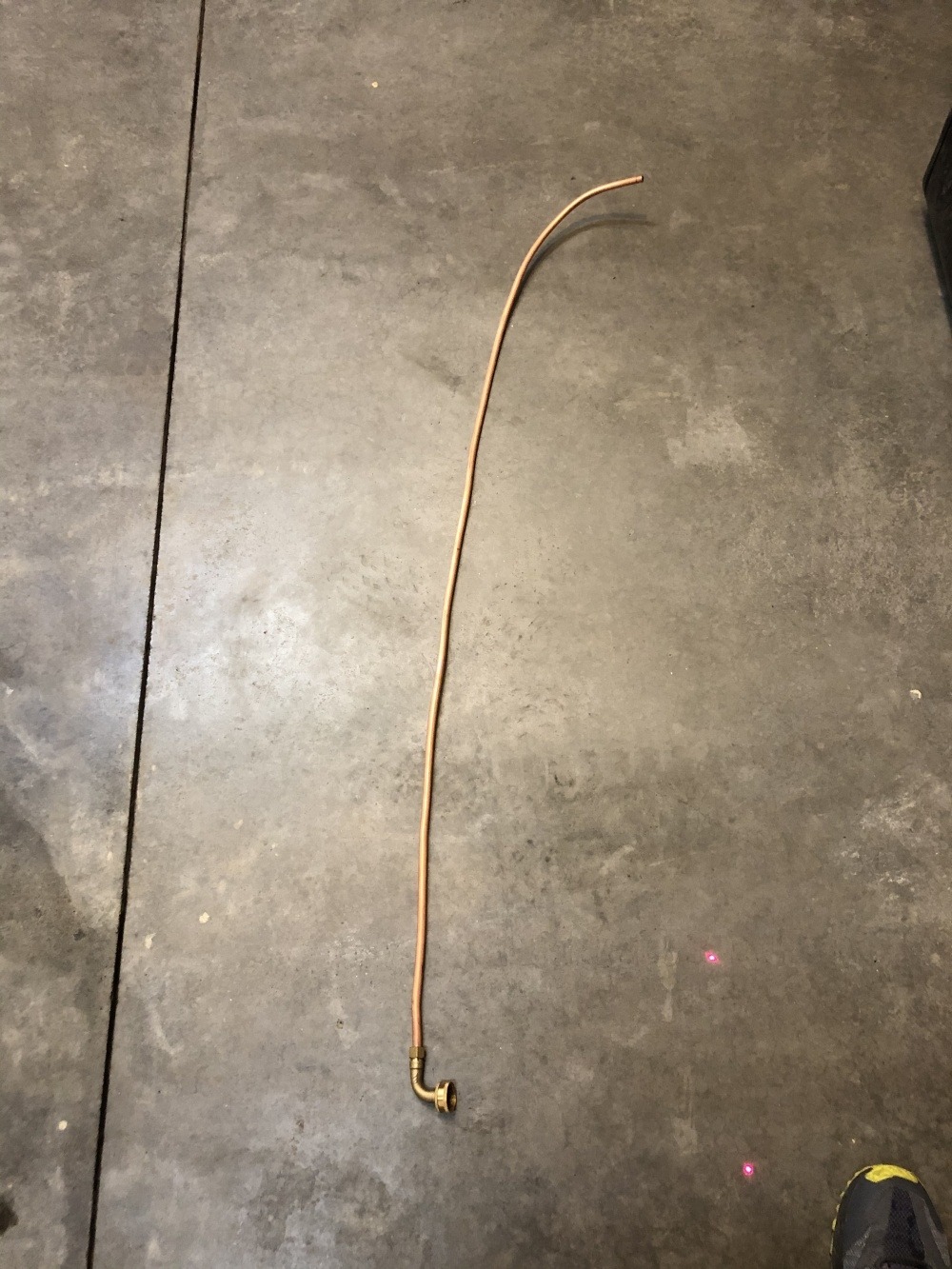
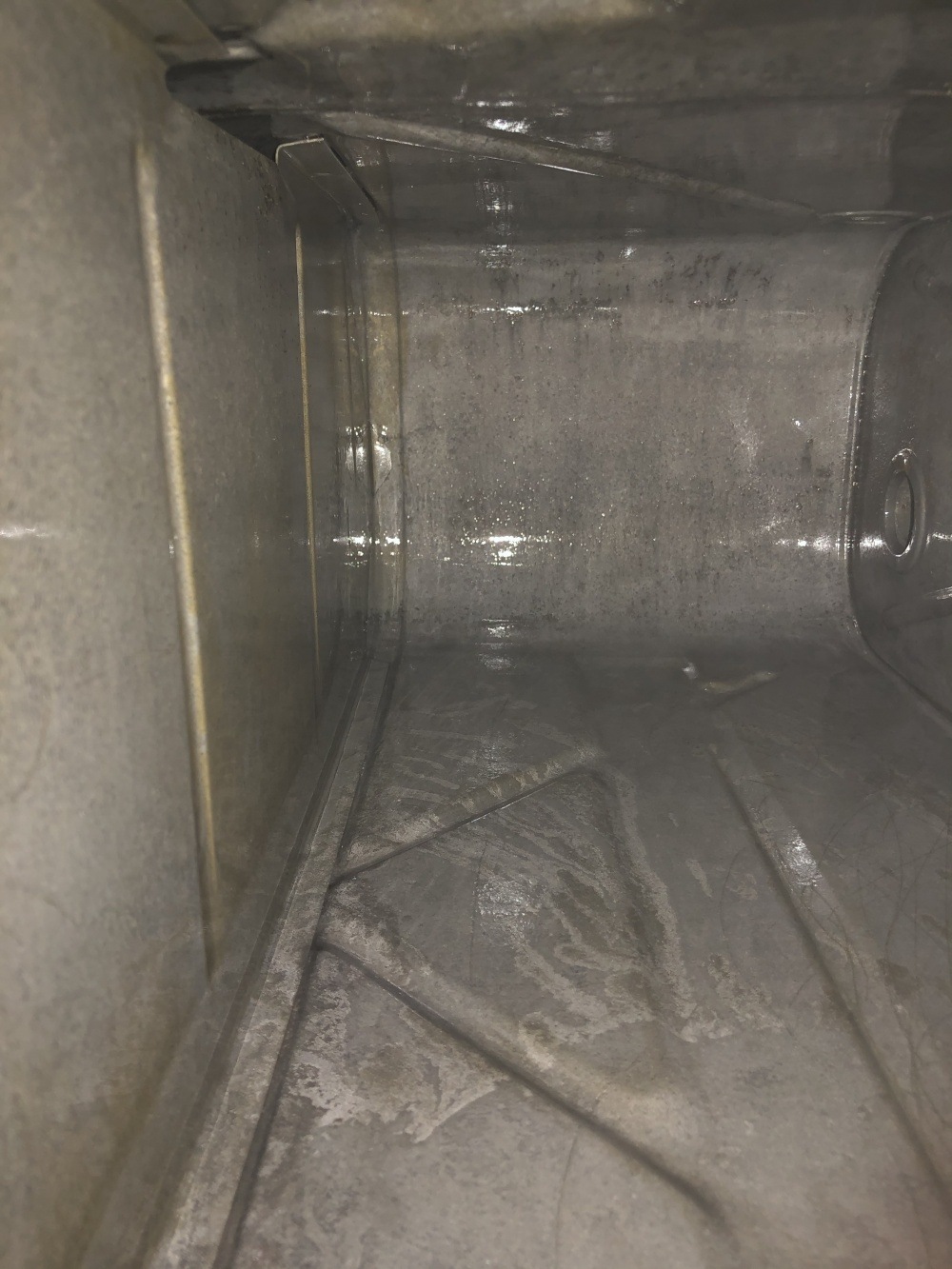
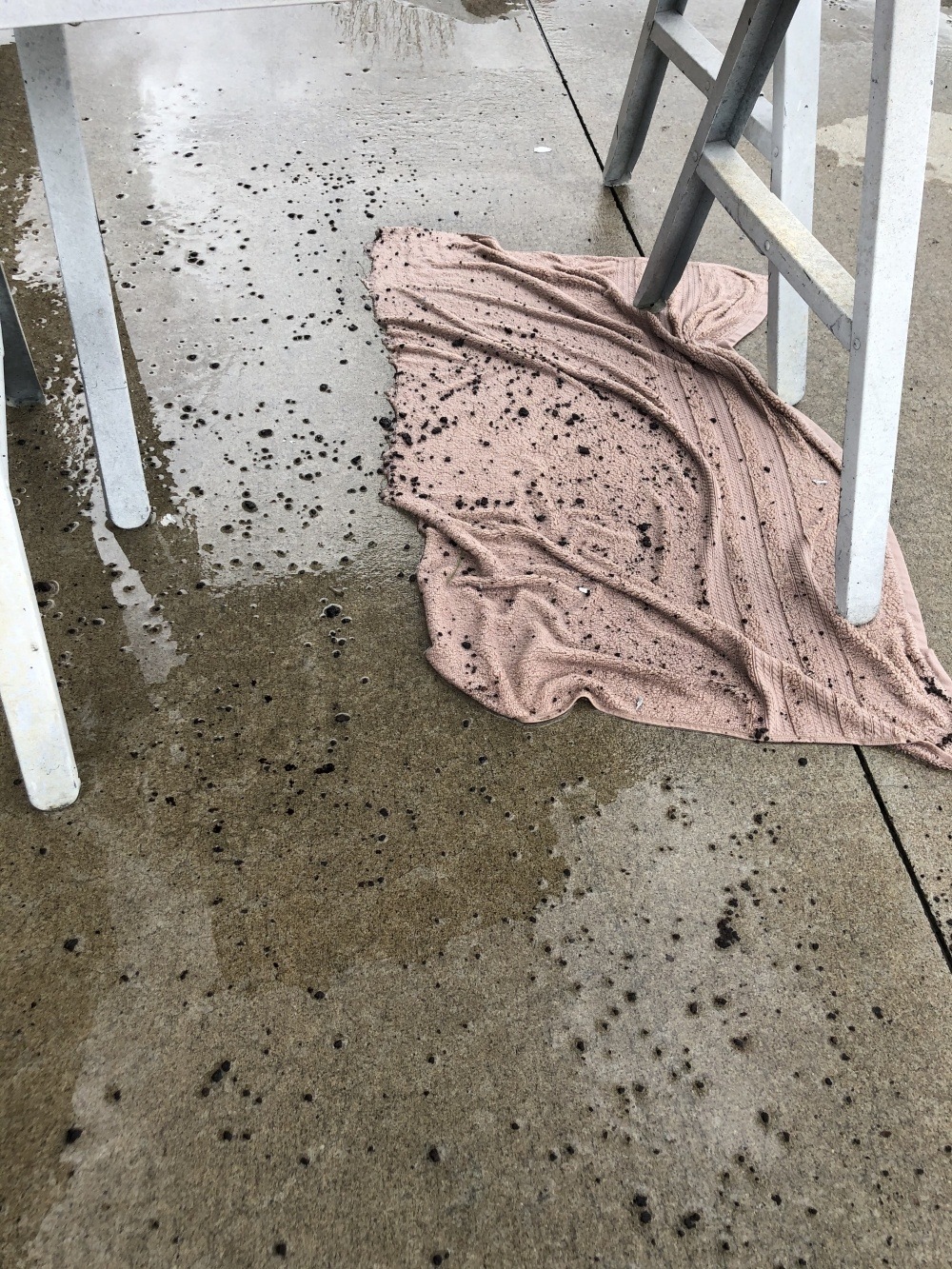
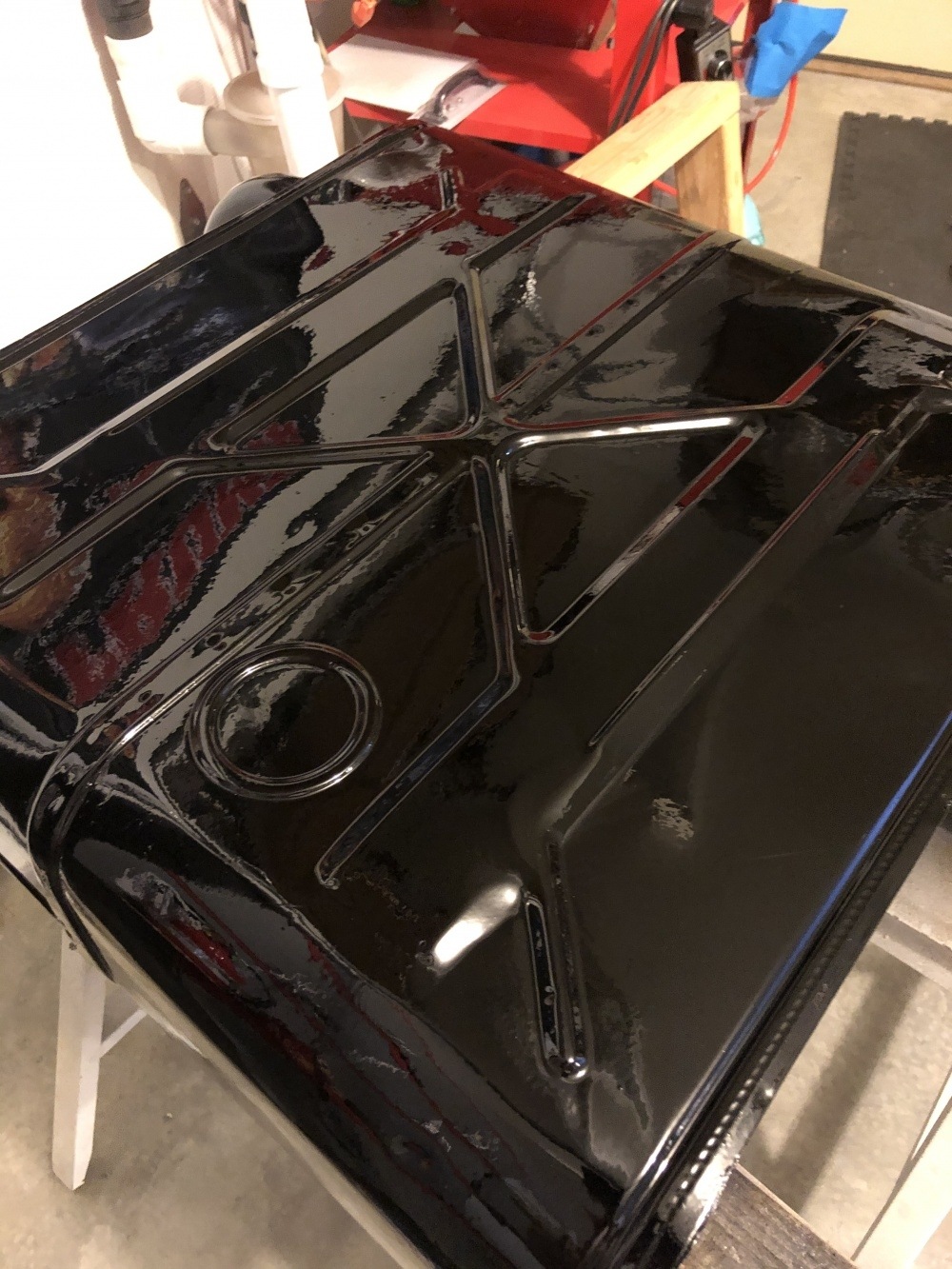 0
0 - Flushed out the tank with water. Built the copper wand to hook on to the garden hose & slide inside the pickup tube hole, then blasted it clean. Note: pinched end down to get more blast of water.
-
WOW, that worked well. Thanks for sharing!
0 -
GREAT work BigSky!!! Looks like new0
-
Thanks guys! This is the method which I settled on after a whole bunch of research & cleaning out two tanks in the last few years.For what it’s worth, I was never keen on putting rocks or chain, etc in the tank. I feared with my luck I wouldn’t get it all out & problems would develop down the line. If the 1st treatment with phosphoric acid didn’t get all the rust you can do it again a 2nd time.In the past I tried the hair dryer / heat gun to dry it but that always got a lot of flash rust. Which is why I added the acid neutralization with baking soda & using rubbing alcohol as a drying agent. WD40 also displaces water but more importantly it coats & protects the metal from rusting. It’s not a problem leaving it in the tank if you plan on filling it full up after installation as it will mix & burn with the gas. If you were concerned or if you used a whole bottle of WD40, after you have it good & coated you can drain the extra out if you like. Hope that helps & ask questions if I wasn’t clear on something!
 0
0 -
Thanks BigSky. Sounds like a plan0
Categories
- 36.9K All Categories
- 113 Hudson 1916 - 1929
- 20 Upcoming Events
- 92 Essex Super 6
- 28.6K HUDSON
- 574 "How To" - Skills, mechanical and other wise
- 995 Street Rods
- 151 American Motors
- 178 The Flathead Forum
- 49 Manuals, etc,.
- 78 Hudson 8
- 44 FORUM - Instructions and Tips on using the forum
- 2.8K CLASSIFIEDS
- 608 Vehicles
- 2.2K Parts & Pieces
- 77 Literature & Memorabilia
- Hudson 1916 - 1929 Yahoo Groups Archived Photos

